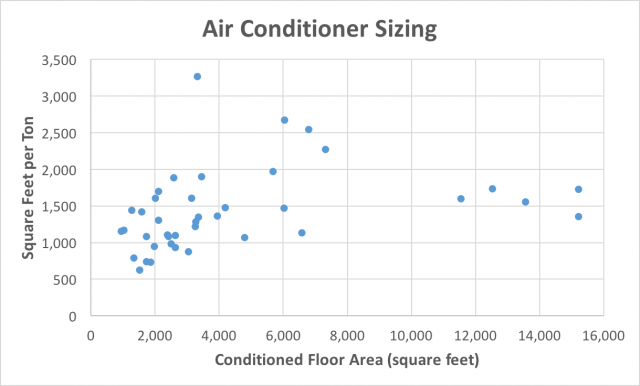Coolbreeze
New Member
I have been in my newly constructed home about 18 months. There is about 2115 SqFt downstairs and 985 SqFt upstairs (3100 total). A single Lennox 5 ton model 14ACX-060-230-16 A/C compressor is installed. It is a split system with a bypass. The upstairs is not used much (all bedrooms are downstairs) so I set the thermostat to 81° to save a little energy. Downstairs, the thermostat is set to 78°. I have done some data collection and found that in about 3.5 hours (3:00 to 6:30) on a warm (92°) sunny afternoon, the upstairs will cycle about 16 times and the downstairs will cycle about 11 times. On average, the upstairs cycle is 4:15 on and 9:45 off (m:ss) and the downstairs is 5:10 on and 15:20 off.
So here are my thoughts:
1. Is seems to me, the "on" times are too short. No sooner than the system reaches peak cooling efficiency the system shuts off.
2. There are many times throughout the day that the system is running solely to cool the upstairs. That is effectively a 5 ton unit unit cooling 985 SqFt. Using the rule of thumb (yeah, I know about rules of thumb) of 600 SqFt/ton, that is 3 times the size needed. Seems to me this could be part of the reason the cycles are so short.
3. Also, there are times throughout the day that the system is running solely to cool the downstairs. Now it is a 5 ton unit cooling 2115 SqFt, which is 1.4 times the size needed.
4. Occasionally, both the upstairs and downstairs are calling for cooling at or near the same time but, during these times, the "on" times are only slightly longer.
5. The humidity in the house feels high. It is running in the mid to upper 50s most of the time (except when the outside humidity is low - not very often here in NW South Carolina)
So I guess my questions are, is my system performing acceptably? If not, what type of corrections/adjustments can be made (by me or an HVAC expert)?
Thanks in advance for your help.
Bill
So here are my thoughts:
1. Is seems to me, the "on" times are too short. No sooner than the system reaches peak cooling efficiency the system shuts off.
2. There are many times throughout the day that the system is running solely to cool the upstairs. That is effectively a 5 ton unit unit cooling 985 SqFt. Using the rule of thumb (yeah, I know about rules of thumb) of 600 SqFt/ton, that is 3 times the size needed. Seems to me this could be part of the reason the cycles are so short.
3. Also, there are times throughout the day that the system is running solely to cool the downstairs. Now it is a 5 ton unit cooling 2115 SqFt, which is 1.4 times the size needed.
4. Occasionally, both the upstairs and downstairs are calling for cooling at or near the same time but, during these times, the "on" times are only slightly longer.
5. The humidity in the house feels high. It is running in the mid to upper 50s most of the time (except when the outside humidity is low - not very often here in NW South Carolina)
So I guess my questions are, is my system performing acceptably? If not, what type of corrections/adjustments can be made (by me or an HVAC expert)?
Thanks in advance for your help.
Bill

